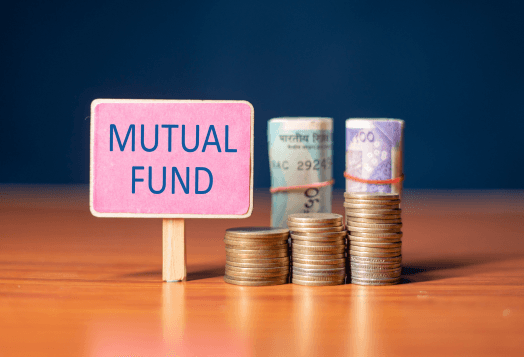A 10% return can feel like 7% if taxes on investments aren’t planned for. That’s where smart investing strategies step in. By choosing tax free investments and tax saving options, you don’t just earn, you earn wisely.
Let’s understand tax-efficient investing and how to make post-tax returns shine brighter.

Why You Must Consider Taxes When Investing
When it comes to building wealth, investment returns often steal the spotlight. But what really counts is what stays in your pocket after taxes. Here are a few reasons why you should consider tax saving options or tax free investments:
Post-Tax Returns Are What Really Matter
Imagine you invest ₹1 lakh and earn a 10% return, giving you ₹10,000 in profit. However, if you pay 30% tax on this profit, your actual gain is only ₹7,000. This simple example shows why focusing only on gross returns can be misleading.
Tax-Efficient Investing Equals Higher Net Returns
Tax efficiency in investing means choosing instruments and strategies that help you pay less tax while earning good returns. By selecting the right mix of investments, you can minimise tax liabilities and retain more of your earnings for future growth.
Strategic Planning Is Key
Understanding tax planning doesn't require you to become a tax expert. However, knowing basic tax rules and applying simple strategies can help you structure your portfolio for optimal tax efficiency.
Talk to a tax expert
Best Tax-Free Investments in India
Tax-free investments are financial instruments where the income you earn is not subject to income tax. Here's a detailed look at some of the top options available:
1. Public Provident Fund (PPF)
PPF is one of the most popular tax-free investments in India, offering triple tax benefits.
Key Features:
Tax Status: Offers EEE (Exempt-Exempt-Exempt) status—contributions, interest earned, and maturity amount are all tax-free
Interest Rate: Currently around 7.1% per annum, reviewed quarterly by the government
Tenure: 15 years mandatory, with options to extend in blocks of 5 years
Annual Limit: Maximum ₹1.5 lakh per year
Withdrawal Rules: Partial withdrawal is allowed from the 7th year for specific purposes like higher education or medical emergencies
Who Should Invest: PPF is ideal for long-term investors who want guaranteed returns with complete tax exemption. It's particularly suitable for building retirement funds.
2. Sukanya Samriddhi Yojana (SSY)
This government scheme is designed for the girl child's future education and marriage expenses.
Key Features:
Purpose: Securing the financial future of girl children
Tax Benefits: Contributions qualify for deduction under Section 80C, and interest earned is completely tax-free
Interest Rate: Currently around 7.6% per annum
Tenure: 21 years from account opening or until the girl's marriage after she turns 18
Annual Limit: Maximum ₹1.5 lakh per year
Withdrawal Rules: Partial withdrawal allowed for higher education expenses after the girl turns 18
Who Should Invest: Parents or guardians of girls up to age 10 should consider this scheme for its high returns and tax benefits.
3. Employee Provident Fund (EPF)
EPF is a retirement savings scheme available to salaried employees.
Key Features:
Tax Benefits: Employee contributions are tax-deductible under Section 80C (old regime), up to ₹1.5 lakh per year. Interest earned is tax-free, but if your own (employee) contributions exceed ₹2.5 lakh in a year, interest on the excess becomes taxable.
Interest Rate: Currently around 8.25% per annum
Contribution: 12% of basic salary contributed by the employee, matched by the employer
Withdrawal: Tax-free if withdrawn after 5 years of continuous service
Restrictions: Recent changes make interest on contributions above ₹2.5 lakh taxable
Who Should Invest: All eligible salaried employees should maximise their EPF contributions for retirement planning.
4. Tax-Free Bonds
These are bonds issued by government-backed entities where the interest income is completely tax-free.
Key Features:
Issuers: Government entities like NHAI (National Highways Authority of India), PFC (Power Finance Corporation), and REC (Rural Electrification Corporation)
Tax Benefits: Interest income is tax-free under Section 10(15)(iv)(h)
Interest Rate: Typically ranges from 5.5% to 7% per annum
Tenure: Usually 10 to 20 years
Liquidity: Can be traded on stock exchanges, providing liquidity before maturity
Who Should Invest: Investors in higher tax brackets who want regular tax-free income should consider these bonds.
5. Life Insurance Maturity Amounts
Life insurance policies offer tax benefits both on premiums paid and maturity proceeds.
Key Features:
Tax Benefits: Maturity proceeds are tax-free under Section 10(10D)
Condition: Premium should not exceed 10% of the sum assured for policies issued after April 1, 2012
Additional Benefit: Premiums paid qualify for a deduction under Section 80C
Types: Term insurance, endowment plans, and ULIPs all qualify
Who Should Invest: Everyone should have adequate life insurance coverage. Choose term insurance for pure protection and consider endowment plans only if tax benefits are a priority.
Tax Saving Options You Shouldn't Ignore
While tax-free investments offer complete exemption from tax, tax saving options help reduce your taxable income, thereby lowering your overall tax liability.
1. Equity-Linked Savings Scheme (ELSS) - Tax Free Mutual Funds
ELSS funds are tax free mutual funds in the sense that investments qualify for tax deductions, though returns may be taxable.
Key Features:
Tax Benefits: Investments up to ₹1.5 lakh qualify for deduction under Section 80C
Lock-in Period: Shortest among tax-saving instruments at just 3 years
Returns: Market-linked with potential for higher returns compared to traditional instruments, but are subject to LTCG tax beyond ₹1.25 lakh.
Taxation of Returns: Long-term capital gains above ₹1.25 lakh are taxed at 12.5%
Top Performing ELSS Funds (Based on Historical Data):
Quant ELSS Tax Saver Fund: 5-year annualised return of 36.7%
HDFC ELSS Tax Saver Fund: 5-year annualised return of 23.5%
JM ELSS Tax Saver Fund: 5-year annualised return of 26.7%
Who Should Invest: Investors with moderate to high risk appetites who want tax benefits along with equity market exposure should consider ELSS funds.
2. National Pension System (NPS)
NPS is a government-sponsored retirement savings scheme with additional tax benefits.
Key Features:
Dual Tax Benefits:
Up to ₹1.5 lakh deduction under Section 80C
Additional ₹50,000 deduction under Section 80CCD(1B)
Returns: Market-linked, varies based on chosen fund managers and asset allocation
Flexibility: Choice between equity, corporate bonds, and government securities
Withdrawal Rules: 60% of the corpus can be withdrawn tax-free at maturity; the remaining 40% is used to purchase the annuity
Who Should Invest: All individuals, especially those who have exhausted their Section 80C limit, should consider NPS for additional tax benefits and retirement planning.
3. 5-Year Fixed Deposits (Tax Saver FDs)
These are special fixed deposits with a 5-year lock-in period that qualify for tax deductions.
Key Features:
Tax Benefits: Investments up to ₹1.5 lakh qualify for deduction under Section 80C
Returns: Fixed interest rates ranging from 5.5% to 7%, depending on the bank
Safety: Completely safe investment with guaranteed returns
Taxation: Interest earned is taxable as per your income tax slab
Lock-in: Cannot be withdrawn or broken before 5 years
Who Should Invest: Conservative investors who prioritise capital safety over high returns should consider tax saver FDs.
4. Unit Linked Insurance Plans (ULIPs)
ULIPs combine investment and insurance, offering tax benefits on both fronts.
Key Features:
Tax Benefits:
Premiums paid qualify for a deduction under Section 80C
Maturity proceeds are tax-free under Section 10(10D), subject to conditions
Investment Options: Choice between equity, debt, and balanced funds
Lock-in Period: 5 years minimum
Charges: Various charges like premium allocation, mortality, fund management, and administration charges
Switching: Option to switch between different fund options
Who Should Invest: Individuals who need life insurance coverage and want market-linked returns should consider ULIPs, but only after careful evaluation of charges.
Understanding Taxes on Investments
Different investments are subject to different tax treatments. Understanding these helps you make informed decisions:
Capital Gains Tax
This applies when you sell investments at a profit:
Short-Term Capital Gains (STCG):
Equity Mutual Funds/Stocks: Gains from selling within 1 year are taxed at 15%, similar to stock option tax rules
Debt Mutual Funds: Gains from selling within 3 years are taxed as per your income tax slab
Long-Term Capital Gains (LTCG):
Equity Mutual Funds/Stocks: Gains above ₹1.25 lakh in a financial year are taxed at 12.5%.
Debt Mutual Funds: As of April 2023, all capital gains from debt mutual funds are taxed as per your income tax slab, regardless of holding period and without indexation benefit.
Dividend Tax
Dividends from mutual funds and stocks are taxable as per your income tax slab.
TDS of 10% is deducted if the dividend income exceeds ₹5,000 in a year.
Interest Income Tax
Interest from savings accounts, fixed deposits, and bonds is taxable as per your income tax slab.
TDS is deducted if interest income exceeds the specified limits.
Case Study: Smart Tax Management in Action
Let's consider Arjun, a 30-year-old software engineer earning ₹12 lakh annually. He wants to invest ₹40,000 in a tax-efficient manner while building wealth for the future.
Arjun's Sample Investment Plan:
Instrument | Monthly (₹) | Annual (₹) | Tax Deduction Section | Tax Benefit Limit |
EPF (employee) | 12,000 | 1,44,000 | 80C | Up to ₹1.5 lakh (total) |
PPF/ELSS | 500 | 6,000 | 80C | Up to ₹1.5 lakh (total) |
NPS | 4,167 | 50,000 | 80CCD(1B) | Up to ₹50,000 (extra) |
Home Loan Interest (EMI) | 15,000 | 1,80,000 | 24(b) | Up to ₹2 lakh (interest) |
Health Insurance (if any) | 2,500 | 30,000 | 80D | Up to ₹25k/₹50k |
Tax-Free Bonds/Other MF | 5,833 | 70,000 | None | No deduction |
Total | 40,000 | 4,80,000 |
Tax benefit is capped: You can invest more, but only the limits above are deductible.
Investing more than the limit (e.g., in ELSS, PPF, or tax-free bonds) is allowed, but excess won’t give extra tax benefit.
Home loan interest and health insurance are powerful ways to increase your total deductions beyond 80C.
This strategy helps Arjun save significantly on taxes while building a diversified portfolio of tax-free investments and tax saving options.
Maximize Your Returns with Smart Tax Planning
Understanding taxes on investments is crucial for maximising your wealth. By strategically combining tax-free investments, tax saving options, and tax free mutual funds, you can significantly enhance your post-tax returns.
Remember, tax planning is not about avoiding taxes entirely—it's about paying them efficiently while achieving your financial goals. Start with small amounts, learn from experience, and work with tax planners to build a tax-efficient portfolio that works for your specific situation.




